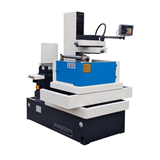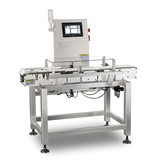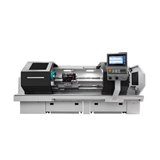Well designed and sold to the public – which in turn might act to suppress political resistance – the Fund will allow Australia to build a home-grown, high value biotechnology industry by removing the arduous barriers which block the nation from doing so, according to Professor Phil Hogg, Director of the Lowy Cancer Research Centre at the University of NSW and an NHMRC Senior Principle Research Fellow.
Early research funding stage "valley of death"
Prof Hogg said whilst there is no shortage of local talent passionate to procure promising research projects, where the current process falls short is in the critical early funding stage. It's a stage that is frequently the source of frustration for many a researcher, one which sees projects driven offshore or left "stranded in the lab". The so called "valley of death" – where an early stage project must prove why it's not only enlightening and exciting to the world of medical science, but also has commercial potential – has hampered too many too often.
Access to research funding has been hitherto through the National Health and Medical Research funding, a federal government body. In an increasingly competitive field, hundreds of applicants – universities, research bodies et al – try to tap into some portion of the $780 million pool allocated. Such heavy competition exists because as Prof Hogg asserts, "it takes millions of dollars, plus the right infrastructure and the right people with the right skills" to essentially turn a new discovery into a new device, drug or therapy.
A sound, long-term investment
Many have argued that the proposed Fund model, which would idealistically deliver more than $1 billion a year from a capital-protected income stream to see projects beyond the early funding stage, is an ideal one and makes for a sound long-term practical approach.
According to venture capitalist Chris Nave, it's also low-risk from a fiscal standpoint, and those who are developing medical devices have the 'brightest future on the global stage'.
As the Managing Director of Brandon Capital Partners, Nave is an entrepreneur who knows all about what is required to raise and manage funds for medical research organisations, having orchestrated the $75 million sale in June of Australian scar-tissue repair developer Fibrotech.
"We can't be undercut by China or Asia as our inventions are protected by patent, and Australia's safe clinical and regulatory environment is compelling to global consumers," he said.
"Australia's Cochlear and ResMed, two device companies that dominate the global markets for ear implants and sleep monitors, make their products here.
"Now that we are losing the car-making industry, we need to look beyond laboratories and further expand the opportunities of the nation's biggest exports manufacturer – the drugs and medical devices sector."
Few immediate, visible benefits
So what lies in its way? According to those within the political arena who oppose its creation (and to a larger extent the general public), the answer is the source of additional money beyond initial capital. A bulk of funding will come from the government's Health and Hospitals Fund, however in a savings measure which has largely proved to be the Coalition's vice the rest will come from the public pocket in the form of a controversial $7 co-payment for medical services. It's a fiscal structure that – upon being announced – had the opposition calling it an 'unfair burden' on poorest and sickest Australians, and has had many financial commentators scratching their heads.
Economist Leith van Onselen in Macro Business labelled the budget measure a "peculiar" one, offering fewer direct benefits to users of the medical system.
He wrote: "While I can acknowledge some wider economic benefits from establishing such a fund – particularly by boosting the nation's intellectual property, allowing opportunities for commercialisation, and potentially weaning us off the US pharmaceutical industry (who, let's face it, are renowned for gouging) – why possibly deprive people of actual medical attention in the process?
"The whole policy is a tough sell politically to an electorate that is being asked to pay more for medical services, but will receive few visible benefits in return."
Industry needs a better model
The Research Fund proposal for now the remains in a holding pattern whilst industry yearns for better support, the opposition refuses to relent and the general public remains doubtful.
The sooner Canberra can come to an agreement of sorts the better, according to Menzies Research Institute Tasmania Director Tom Marwick, because the current approach to medical research and healthcare isn't sustainable.
"Every dollar invested in health and medical research returns on average $2.17 in health benefits," Prof Marwick said.
"We can't keep the same approach to healthcare in the face of an ageing population and chronic disease.
"If new advances are not made, there will be increasing challenges to the provision of health care based on funding limitations."












-160x160-state_article-rel-cat.png)
-160x160-state_article-rel-cat.png)












-160x160-state_article-rel-cat.png)